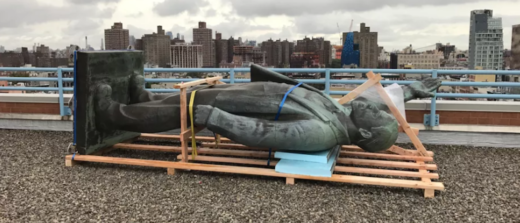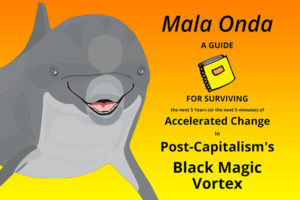The Dual Power of Arts Organizations
Joshua Simon

V. I. Lenin
As organizers and administrators in the art field, we develop projects to support our long term program. At the same time, we create our long term program in order to enable the projects. That is why we have to initiate and respond. Taking this way of working into consideration, we can try and scale it up to create a sustainable infrastructure to support our activities.
Practices such as erecting drywall for a show and then tearing it down, working on parallel projects, managing low-intensity collegial networks for deadline based tasks, applying for funding in order to get your unpaid work completed, and valorizing goods while impoverishing ourselves teaches us that creative practices—namely what artists do today—have become models and source of inspiration for contemporary forms of precariat ready to deliver outsourced labour. We are all driven individuals full of ideas. Somehow being creative doesn’t seem to like such a good idea any more. It seems that our creative capacities pose a problem, and gentrification is one example of that. Yet, claiming that “art is gentrification”–something I actually heard in a conversation at the latest Berlin Biennial–appears too cynical and anti-political to be deemed a worthy assessment of contemporary art’s contradictory capacities. If anything, art can also be considered an agent of gentrification where everything is only real-estate. And this might actually be a good way to describe our world. That is why cities that have no public housing or rent control experience the effects of contemporary art also as urban gentrification.1
From licensing of intellectual property to privatization policies, to student loans and mortgages, and the real existing internet, the forms of capitalist accumulation shift from production and growth to life-taxes and rents. Technological and legal devices monopolize access by territorializing even immaterial things to the extent that they behave like fenced land. The realities of our digitized present confront us again and again with different practices of accumulation by dispossession. As Frederic Jameson put it: “Postmodern politics is essentially a matter of land grabs on a local as well as a global scale. Whether you think of the question of Palestine, the settlements and the camps; or of the politics of raw materials and extractions; whether you think of ecology and the rain-forests for example; or the problems of federalism, citizenship and immigration; or whether it’s a question of gentrification in the great cities as well as favelas and townships, and of course the movement of the landless – today everything is about land.”2
Berlin’s Mitte since the 1990 is of course the example of how artistic practices were used as fertilizer to re-cultivate a no man’s land. This is the scenario we know, but it is interesting to think about the previous political order in regards to the arts. If we take seriously the claims by the writers like Eva Cockroft and Max Kozloff on the CIA’s involvement in distributing American post-war modernism in the service of Cold War politics,3 it might help us understand our situation today. To put it as bluntly as possible, we are basically not needed anymore. Welfare states—a direct product of capitalism’s inability to defeat the USSR before and during the second world war—enjoyed significant funding for culture. Now that there’s no USSR, there’s no need for capitalism to offer subsidies and social services. On the contrary, now everything is a commodity. In recent years, places like the Netherlands and the UK experienced huge budgetary cuts for culture. What once was praised for self expression, freedom of speech and civil liberties during the Cold War is useless today. Culture and art do not have the function they had back then. We are no longer living proof of the West’s superiority.
What this means for us is that we are experiencing our practice in a manic-depressive manner: on the one hand the world is following in our footsteps as far as flexibility, valorization and gentrification go, yet on the other, the state does not need us, and almost no one is willing to fund art outside the art market. We are extremely exploitable and irrelevant at the same time.
In “The Sadness of Post-Workerism,” David Graeber writes, “While they are not always self-consciously revolutionary, artistic circles have had a persistent tendency to overlap with revolutionary circles; presumably, precisely because these have been spaces where people can experiment with radically different, less alienated forms of life.”4 Graeber says that historically, artists and revolutionaries experiment with notions of value for very different reasons. While revolutionaries aim to overthrow the existing regime for new sets of value, artists experiment with value within the existing regime. Companions for brief yet intense moments—this constant negotiation between two different experiments with value has been the fuel of many avant-gardes. But, couldn’t we claim the same in relation to “urban renewal” and artistic practices? I mean that we negotiate value differently. While ours is a make-do attitude, theirs is focused on price. While we are expressing our need for infrastructure, after we have been given over to the market, they are speculating thanks to the lack of social infrastructure. We have seen the rise and fall of the artist as consumer with the appropriation art of the 1980s. Then we saw the shift towards the artist as producer with video productions and installation art in the 1990s. Since the 2000s, we see the artist as researcher in the zero growth economy.5
So, how do we set out to organize our arts institutions? Here we go into the question of organization. Recently, the Leninist idea of dual power was revisited in Jameson’s provocative reader “An American Utopia.”6 In the book, Jameson proposes the military as the only viable infrastructure for the Left to work with. For him, the military operates as a huge infrastructure that is not solely profit driven–it takes care of its soldiers with education, health, transportation, and other support structures that cannot be found outside it. Dialectically, the military also politicizes the public as the draft implicates everyone. Jameson remarks that it was President Nixon who ended the draft in order to put an end to popular, and in particular student resistance to the war in Vietnam. What Jameson stresses in this proposal more than anything is the lack of infrastructure for Left politics today. Relying on the military of all things reveals how haphazard Leftist political organizing has become. This relates directly to our arts institutions and the ways they suffer from diminishing public infrastructure. The notion of dual power, which Jameson takes from Lenin, refers directly to questions of structure and spontaneity, self-organization and long term support systems. These seem to be questions we should ask ourselves not only in politics today, but also in relation to our arts organizations and how we manage them and coordinate between them. The need for organizational infrastructure seems to be relevant in our case as well. In Lenin’s short essay published in “Pravda” in the transitional days of the spring of 1917, prior to the victory of the revolution, he describes a form of feedback sovereignty in which the then provisional government (pre-Bolshevik) and the network of already existing soviets (workers and soldiers councils) cooperate.7 Jameson compares this to the Black Panthers whose organization included daily services (food kitchens, garbage collections, health care, water inspection, etc.). For him, Occupy did not constitute dual power. While the encampments operated like self-organized entities, online social media did not function as an organizing infrastructure between the different units and against the one percent. Therefore, parallel to a strategy for taking power, we have a network of councils that already functions as if it contains that power. Dual power includes a centralized confrontational strategy together with a decentralized practice of social organizing in communities. These operate side by side as parts of the same project. Dual power therefore generates a shadow state that takes care of the people and makes them realize they can do away with the current state. Alongside a direct political assault on the current regime, this network of dual power makes it wither away. The operative application of dual power, after taking the state, is best described in Lenin’s formula for the USSR as a combination of the soviets and electricity used here as an epigraph (USSR = Soviets + Electricity). In this respect, his idea of what the USSR would be was a vision of a network of free self-organized entities, affiliated by an infrastructure that feeds and connects them. Note that the name USSR does not demarcate any territory—it is simply a union of soviets.
Therefore, dual power could be a useful reference for us when we come to discuss the ways we can organize ourselves. Maybe not for art initiatives to gain political domination (yet), but at least to achieve some form of sustainable infrastructural networks. In the age of franchised museums, one can already observe that while the biggest art museums open branches, independent art spaces and initiatives find ways to develop projects together. Changing funding conditions demand that we share costs, which is one reason this is happening. Secondly, from each other we can learn how to work with other like-minded local actors to counter artwashing and displacement. When several independent institutions collaborate on an application for funding (something I find myself doing more and more), the process can stay very administrative with the initial guidelines of the funding entity strictly followed (cultural exchange, and promoting this or that set of values, media, or any other thing). However, it can also work to our benefit on a larger scale, first by initiating a project together and then with each partner applying for available funding and assistance in his/her territory. Now funding is coming into the network we have initiated. Therefore, instead of only chasing deadlines and potential benefactors, we can potentially find assistance amongst ourselves.
I have heard the term “The Field and the Market” in arts management circles. This refers to the way the art market feeds non-commercial, artist-run initiatives. We find ways to produce projects that once completed and exhibited with us and find their way into commercial galleries and art fairs. Now this relates to a whole set of other concerns that involve questions of living wages and artists literally working in the greater economy to support themselves. But, I am mentioning this issue because we need to think of ways to keep the investment we have been able to put into a project so that when it goes commercial, our non-profit is not a facilitator for a commercial gallery’s gain. Imagine that we keep the money in the network we’ve set up—that we share mailing lists and start our own web-blast service with announcements. If we only advertise in the network, it will grow. It can be used as a tool for us to refer to each other for assistance (a residency program looking for one thing, and an artist-run space looking to engage in exactly that thing). The fact that I can think of these things means that they probably already exist. We can already see possible reference to orientate ourselves in this. Like the dual power of the network of soviets, these lines of distribution are the infrastructure we need.
________________________________
1. See for example the story of “BHAAAD – Boyle Heights Alliance Against Artwashing and Displacement,” in Los Angeles: http://observer.com/2016/07/one-la-hood-is-violently-fighting-gentrification-demanding-art-galleries-leave/
2. Frederic Jameson, “The Aesthetics of Singularity,” in: New Left Review 92, March-April 2015, pp. 130-131
3. See: Max Kozloff, “American Painting During The Cold War,” Artforum Vol. 11, No. 9, May 1973 and: Eva Cockroft, “Abstract Expressionism, Weapon of the Cold War,” Artforum, Vol. 15, No. 10, June 1974
4. David Graeber, “The Sadness of Post-Workerism, or ‘Art And Immaterial Labour’ Conference: A Sort of Review (Tate Britain, Saturday 19 January, 2008)”, The Commoner, 01.04.2008: www.commoner.org.uk/?p=33
5. See for example: Ekaterina Degot and David Riff, Monday Begins on Saturday: Bergen Assembly 2013, Sternberg Press, 2013, pp. 12-25. In a previous collaborative curatorial project, together with Cosmin Costinas, Ekaterina Degot and David Riff have coined the term “Shockworkers of the Mobile Image” to relate protocols of artistic production in post-constructivist USSR with those under which we operate today. See: The First Ural Industrial Biennial of Contemporary Art, Ekaterinburg, Russia, NCCA, 2010.
6. Frederic Jameson, An American Utopia: Dual Power and the Universal Army, including contributions by: Kim Stanley Robinson, Jodi Dean, Saroj Giri, Agon Hamza, Kojin Karatani, Frank Ruda, Alberto Toscano, Kathi Weeks, and Slavoj Zizek, Verso Books, 2016
7. Vladimir Ilyich Lenin, “The Dual Power,” in: Lenin Collected Works, Progress Publishers, 1964, Moscow, Volume 24, pp. 38-41, first published in: Pravda, No. 28, April 9, 1917. See also: https://www.marxists.org/archive/lenin/works/1917/apr/09.htm
This essay was originally commissioned by Temporary Art Review as part of Field Perspectives-a co-publishing initiative with the Miami Rail, Temporary Art Review and Common Field for the 2016 Common Field Convening.











